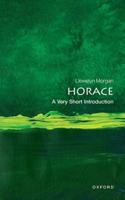Publisher's Synopsis
Excerpt from Early Christian Art in Ireland, Vol. 1
The subject of the following chapters is what has been often mis-named Celtic, anglo-saxon, or Runic Art, whereas the style is Irish. The term Celtic belongs to the arts of bronze and gold and enamel practised in Britain before the Roman occupa tion, and in Ireland before the introduction of Christianity in the fifth century. It also embraces the great stone forts that line the western coasts of the country, such as Dun Aengus and Dun Conor, as well as the chambered tombs of New Grange. The late Celtic style in Great Britain, the bronzes of which are marked by distinct characteristics in decoration, prevailed from about two hundred years before the birth of Christ to the time of the Roman occupation. It lingered to a much later date in Ireland. Early Celtic goes back much farther into a pre historic region in which we cannot trace similar peculiarities of decorative design. The early Christian Art of Ireland may well be termed Scotic as well as Irish, just as the first missionaries from Ireland to the Continent were termed Scots, Ireland having borne the name of Scotia for many centuries before it was trans ferred to North Britain; and foreign chroniclers of the ninth century speak of Hibernia, island of the Scots, when referring to events in Ireland regarding which corresponding entries are found in the annals of that country.
About the Publisher
Forgotten Books publishes hundreds of thousands of rare and classic books. Find more at www.forgottenbooks.com
This book is a reproduction of an important historical work. Forgotten Books uses state-of-the-art technology to digitally reconstruct the work, preserving the original format whilst repairing imperfections present in the aged copy. In rare cases, an imperfection in the original, such as a blemish or missing page, may be replicated in our edition. We do, however, repair the vast majority of imperfections successfully; any imperfections that remain are intentionally left to preserve the state of such historical works.










